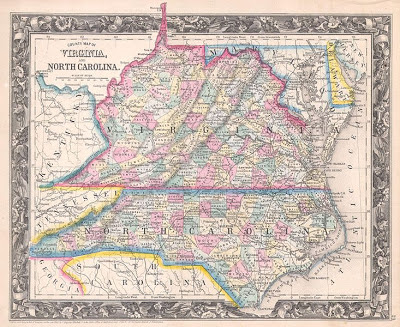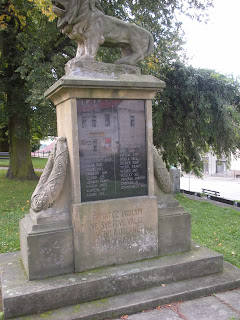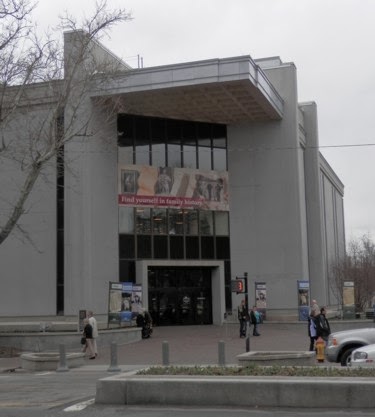Did you know that the regional archives in the Czech Republic
are in the process of digitizing their records? More about this later in this post.
In my blog post of September 19, 2011, I wrote about the pleasures of working with another person to tackle genealogical research. I have been very fortunate to be partnering with my sister, Monique Whitman, to ferret out the details of our Czechoslovakian Holub ancestors’ lives.
It’s amazing how much more two can unearth than one!
Monique asked our mother’s advice on whom she might contact in order to find out more information on our maternal grandfather, Frank (Frantisek in Czech) Holub. Well, our mother recalled that Frank had remarried when she was about twelve. Monique did some serious sleuthing and found that Frank’s second wife was Angeline (Ann) Oslakovic Holub, they married in 1939, and the marriage lasted the rest of Frank’s life.
As you can see, the document is in Czech. Monique used some on-line translation sites, such as Google translate to figure out the headings on the left side of the certificate. Here is what she came up with:
From this document, we finally found out the name of Frank’s mother – Marie Lojinove born in Prague. Oh, what joy! None of the American records that Monique and I had found mentioned Frank’s mother.
We also saw that our identification of Frank’s father as Josef (Joseph) Holub living in Naceradec was corroborated by this record.
In addition to translating the baptism record, Judy alerted me to the fact that the Czech Regional Archives are digitizing their records. Now Monique and I can search for the records of Frank Holub’s parents and grandparents and even further back.
Teamwork pays off in many ways in life, but in genealogy the rewards can be amazing. If you want to move forward in your research, it is to your advantage to find others with similar interests. Joining genealogical societies, like the Czechoslovak Genealogical Society International, is one way to find communities of people to work with.
And looking closer to home, you might find siblings and cousins who are eager to join you in unlocking family history.
Categories: genealogy groups
are in the process of digitizing their records? More about this later in this post.
The theme of this post is two-fold. First, I want to reiterate once more that a genealogist never knows where precious information may come from. No matter how distant, we should never overlook any possible source.
 |
Two heads, 1830, A.H.Maurer ,public domain, wikimedia |
In my blog post of September 19, 2011, I wrote about the pleasures of working with another person to tackle genealogical research. I have been very fortunate to be partnering with my sister, Monique Whitman, to ferret out the details of our Czechoslovakian Holub ancestors’ lives.
It’s amazing how much more two can unearth than one!
Monique asked our mother’s advice on whom she might contact in order to find out more information on our maternal grandfather, Frank (Frantisek in Czech) Holub. Well, our mother recalled that Frank had remarried when she was about twelve. Monique did some serious sleuthing and found that Frank’s second wife was Angeline (Ann) Oslakovic Holub, they married in 1939, and the marriage lasted the rest of Frank’s life.
During her research, Monique discovered a relative of Ann’s who is still alive! When she contacted him, he not only remembered Frank Holub, but he had Frank’s baptism record from
Czechoslovakia (The Czech Republic.) Who knows why or how he had this document. But it just goes to prove that we genealogists never know where our next record will be. Here is the baptism certificate: |
CIA Czech Republic map in public domain, wikimedia |
Politicky okres = political district
Soudni okres = judicial district
Misto narozeni cis domu = birthplace
Krestni List. = baptismal certificate
Den, medic, a rook = day, month, year
Narozeni = date of birth
Krtu = baptism
Dubna - April
devatenact set tri = nineteen hundred and three
Jmeno ditete = name
Nabozenstvi = religion
Rimsko katolicke = Roman Catholic
Loze = box, bed, club, society
Otec = father
Matka = mother
Praze = Prague
Knez = priest
Kmotr a svedek = Godfather and witness
Porodni baba = midwife
Now we had a structure to begin to understand the document. But the need to know more was too great for me. What I needed was a human translator! I decided to check out the new Czech society I recently joined, the Czechoslovak Genealogical Society International, to see if they might have a listing of translators. And yes, right on the first page, left column was the link I was looking for: Translators. When I clicked on the link, I found an alphabetical list, read the descriptions of people’s research expertise, and chose Judy Nelson. I e-mailed Judy to discuss her services and was amazed and delighted when she sent me this translation the next day:
(upper left - ) Czechoslovakia, district Benesov, county Vlasim, town born Naceradec no. 139.
(upper right-) book 8, page 208
Baptismal Certificate
Born 20 April 1903, nineteen hundred and three
Baptized 26 April, 1903
Name of child Frantisek (Frank, Franz)
Religion Roman Catholic
Legitimacy - Legitimate
Father Josef (Joseph) Holub, born at Volesne, Benesov, a cottager at Naceradci no. 139, legitimate son of Jan (John,Johann) Holub, worker at Volesne and Antonie (Antonia) born Zemanove (Zeman) at Dolni Lhoty (Lhota), Ledec.
Mother Marie, born at Prague, book 2, page 441, illegitimate daughter of Marie Lojinove, legitimate daughter of Vaclav (Wenceslaus,Wenzl) Lojina, worker at Bukove, Pribram and Barbora (Barbara) born Krasu (or Krasn) at Rosovic, Pribram.
Priest - Antonin Filip, priest at Naceradci.
Godparents Frantisek Hausner, shoemaker at Horni Lhota no. 7 and Barbora, wife of Antonin Kroupa, farmer at Lhota 4.
Midwife - Terezie Doubkova, examined (like licensed) at Naceradci no. __.
At administrative office at Naceradci. the 7th February 1924. Alois (Louis) Strnad _____ (his title, illegible)
 |
Načeradec, the Czech Republic, 2009 by cs:ŠJů, licensed under the Creative Commons Attribution-Share Alike 3.0 Unported license |
We also saw that our identification of Frank’s father as Josef (Joseph) Holub living in Naceradec was corroborated by this record.
In addition to translating the baptism record, Judy alerted me to the fact that the Czech Regional Archives are digitizing their records. Now Monique and I can search for the records of Frank Holub’s parents and grandparents and even further back.
Teamwork pays off in many ways in life, but in genealogy the rewards can be amazing. If you want to move forward in your research, it is to your advantage to find others with similar interests. Joining genealogical societies, like the Czechoslovak Genealogical Society International, is one way to find communities of people to work with.
And looking closer to home, you might find siblings and cousins who are eager to join you in unlocking family history.
Categories: genealogy groups

















































































.jpg)

.jpg)











































